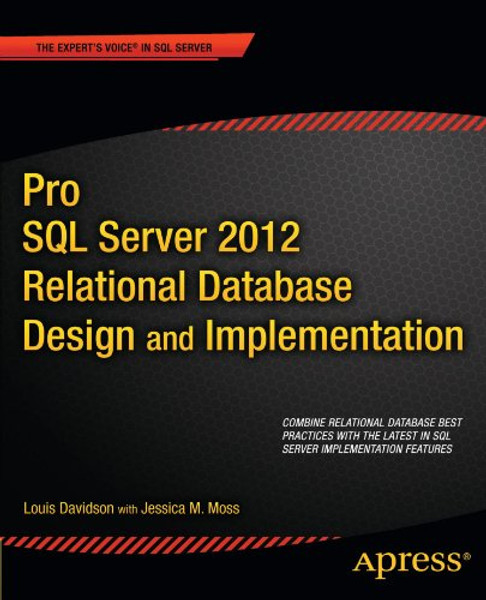Product Overview
Learn effective and scalable database design techniques in a SQL Server environment. Pro SQL Server 2012 Relational Database Design and Implementation covers everything from design logic that business users will understand, all the way to the physical implementation of design in a SQL Server database. Grounded in best practices and a solid understanding of the underlying theory, Louis Davidson shows how to get it right in SQL Server database design and lay a solid groundwork for the future use of valuable business data.
- Gives a solid foundation in best practices and relational theory
- Covers the latest implementation features in SQL Server
- Takes you from conceptual design to an effective, physical implementation
What youll learn
- How to develop conceptual models of client data using interviews and client documentation
- How to recognize and apply common database design patterns
- How to normalize data models to enhance scalability and the long term use of valuable data
- How to translate conceptual models into highperforming SQL Server databases
- How to secure and protect data integrity as part of meeting regulatory requirements
- How to create effective indexing to speed query performance
Who this book is for
Pro SQL Server 2012 Relational Database Design and Implementation is designed for programmers of all types who want to use SQL Server 2012 to store data. Chapters on fundamental concepts, the language of database modeling, SQL implementation, and of course, the normalization process, lay a solid groundwork for readers who are just entering the field of database design. More advanced chapters serve the seasoned veteran by tackling the very latest in physical implementation features that SQL Server has to offer.
Table of Contents
- The Fundamentals
- Introduction to Requirements
- The Language of Data Modeling
- Initial Data Model Production
- Normalization
- Physical Model Implementation Case Study
- Data Protection with Check Constraints and Triggers
- Patterns and Anti-Patterns
- Table structures and Indexing
- Coding for Concurrency
- Reusable Standard Database Components
- Standardized Data Models
- Considering Data Access Strategies
- Reporting Design
- Appendix A
- Appendix B










